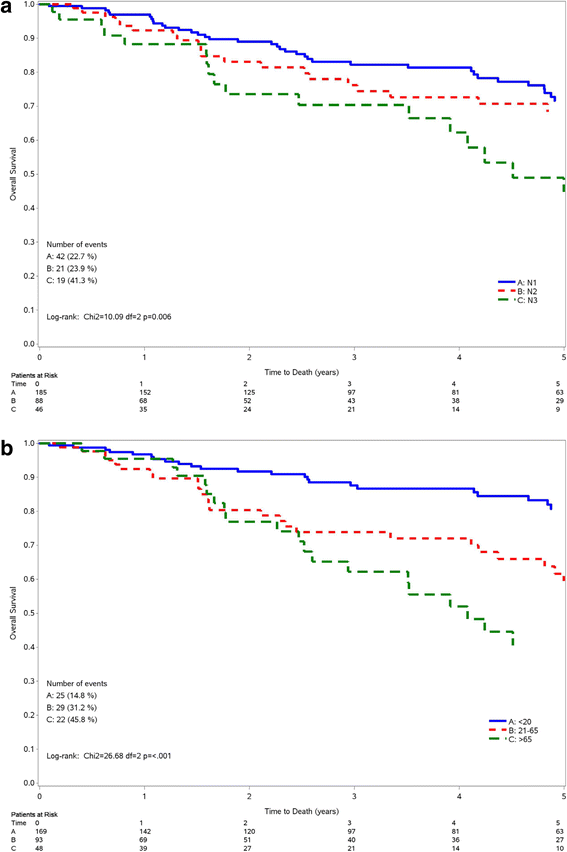Clinical and pathological factors influencing survival in a large cohort of triple-negative breast cancer patients
- PMID: 29310602
- PMCID: PMC5759886
- DOI: 10.1186/s12885-017-3969-y
Clinical and pathological factors influencing survival in a large cohort of triple-negative breast cancer patients
Abstract
Background: To provide further information on the clinical and pathological prognostic factors in triple-negative breast cancer (TNBC), for which limited and inconsistent data are available.
Methods: Pathological characteristics and clinical records of 841 TNBCs diagnosed between 1994 and 2015 in four major oncologic centers from Sardinia, Italy, were reviewed. Multivariate hazard ratios (HRs) for mortality and recurrence according to various clinicopathological factors were estimated using Cox proportional hazards models.
Results: After a mean follow-up of 4.3 years, 275 (33.3%) TNBC patients had a progression of the disease and 170 (20.2%) died. After allowance for study center, age at diagnosis, and various clinicopathological factors, all components of the TNM staging system were identified as significant independent prognostic factors for TNBC mortality. The HRs were 3.13, 9.65, and 29.0, for stage II, III and IV, respectively, vs stage I. Necrosis and Ki-67 > 16% were also associated with increased mortality (HR: 1.61 and 1.99, respectively). Patients with tumor histotypes other than ductal invasive/lobular carcinomas had a more favorable prognosis (HR: 0.40 vs ductal invasive carcinoma). No significant associations with mortality were found for histologic grade, tumor infiltrating lymphocytes, and lymphovascular invasion. Among lymph node positive TNBCs, lymph node ratio appeared to be a stronger predictor of mortality than pathological lymph nodes stage (HR: 0.80 for pN3 vs pN1, and 3.05 for >0.65 vs <0.21 lymph node ratio), respectively. Consistent results were observed for cancer recurrence, except for Ki-67 and necrosis that were not found to be significant predictors for recurrence.
Conclusions: This uniquely large study of TNBC patients provides further evidence that, besides tumor stage at diagnosis, lymph node ratio among lymph node positive tumors is an additional relevant predictor of survival and tumor recurrence, while Ki-67 seems to be predictive of mortality, but not of recurrence.
Keywords: Clinicopathologic factors; Prognostic factors; Stage; Survival; Triple-negative breast cancer.
Conflict of interest statement
Ethics approval and consent to participate
The study protocol was approved by the local research ethics committee of Sardinia Region (File number 224/CE/12). Informed consent was waived from the local research ethics committee since patients’ information was collected during the routine clinical practice and patients were identified by anonymized investigator-generated code not linkable to their personal data.
Consent for publication
Not required
Competing interests
The authors declare that they have no competing interests.
Publisher’s Note
Springer Nature remains neutral with regard to jurisdictional claims in published maps and institutional affiliations.
Figures


References
-
- Lin NU, Vanderplas A, Hughes ME, Theriault RL, Edge SB, Wong YN, Blayney DW, Niland JC, Winer EP, Weeks JC. Clinicopathologic features, patterns of recurrence, and survival among women with triple-negative breast cancer in the national comprehensive cancer network. Cancer. 2012;118:5463–5472. doi: 10.1002/cncr.27581. - DOI - PMC - PubMed
Publication types
MeSH terms
Substances
Grants and funding
LinkOut - more resources
Full Text Sources
Other Literature Sources
Medical
Molecular Biology Databases
Miscellaneous

